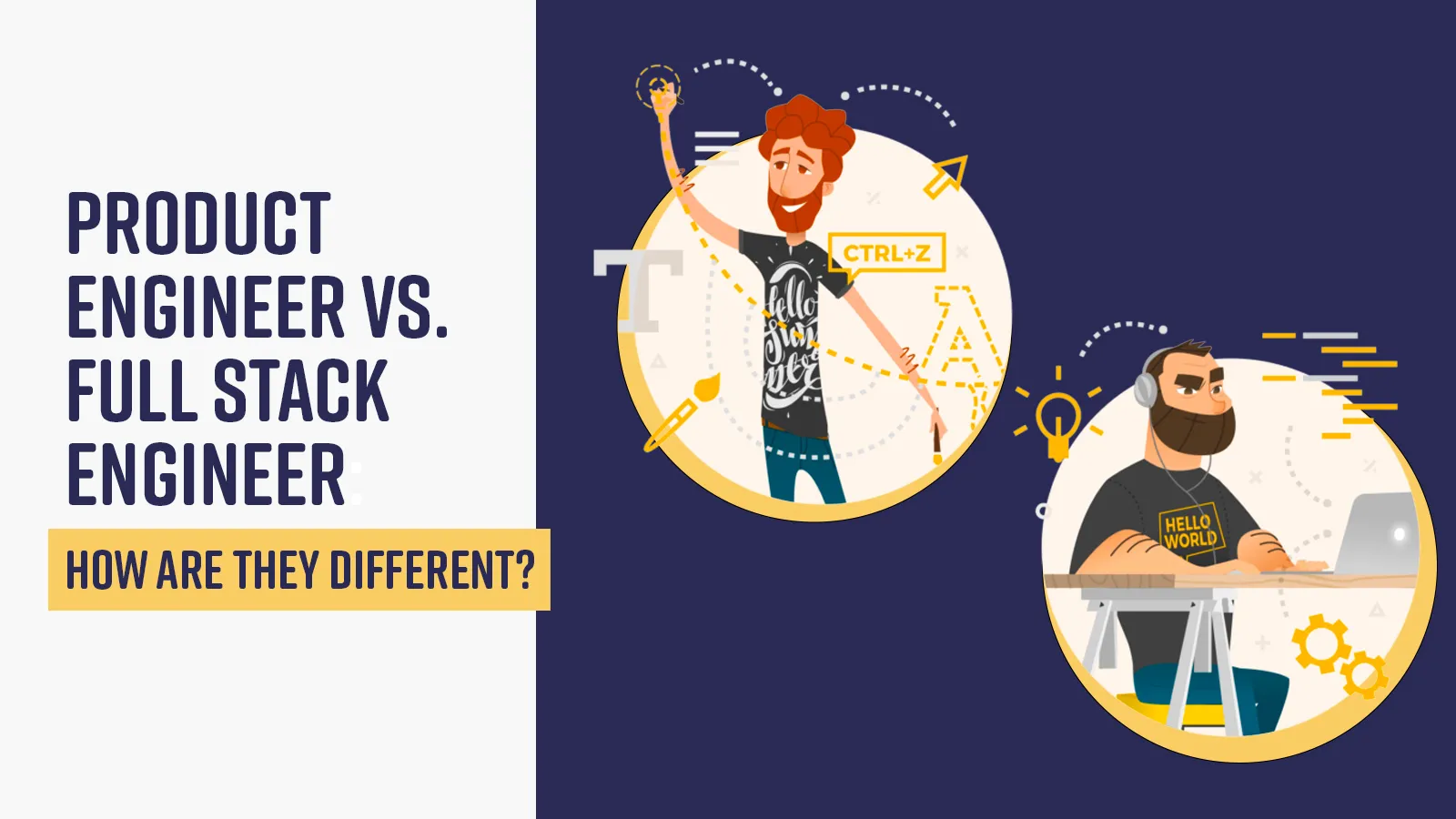Increased demand for faster deployment of projects, continuous iteration and innovation, and reduced production cost are some of the key drivers that have led to the rise in demand for product engineering services today. In this blog, we shall discuss how product engineers are different from full stack engineers in their characteristics, roles and responsibilities.
In 2021, the product engineering market grew to $1,003.12 billion from $676.17 billion in 2016, as per latest Market Research Report on product engineering services. There has been an increasing inclination towards new-age engineering models on the lines of digital technologies so as to develop more innovative products at a faster Time To Market (TTM). The report highlights that the increasing need for communication technologies and electronic components has led to a drastic demand for product engineering in the present times.
Product engineer vs full stack engineer: the key difference
The term product engineering comes from an engineer’s capabilities to drive the project of organizing and running the product development in an efficient manner. Product engineering charts an engineer’s journey through a product's lifecycle, i.e. from the conception of an idea to the entire deployment of that idea as a successful product.
Full stack engineers know not only the basic CSS and HTML languages, but also how to program a server, browser, and database. There could be full stack front end engineers that work on client software, and full stack back end engineers that work on server software.
Full stack engineering includes skill sets like business logic, designing, managing hosting services, server, data storage, among others. It focuses on the means of a goal. Meanwhile, product engineer refers to an engineer’s ability for end goal delivery.
Rise of Product Engineering
The rise of popularity of product engineering emerged from business’ need for moving towards advanced techniques while mitigating risks. The concept levels up from the traditional methods of engineering, and calls for accelerating the pace of massive transformation with budget-friendly and faster TTM solutions.
A Product engineer effectively builds a product and shapes it through his/her strong technical opinions and perspectives, along with the business ideas led by the company. This enables robust technical trade-off resulting in a sound product.
Phases of Product Engineering
Different phases of product engineering are:
- Ideation phase: At this stage, product engineers estimate technical functionalities and chart out a detailed project plan.
- Architecture, Designing and Development phase: Creating the project architecture, designing of the project and developing a plan which is not just user friendly, but also cost effective, is an essential part of the phases of product engineering.
- Testing phase: Comprehensive testing before actual deployment of the product is among the crucial aspects of the product engineering process. Functionality testing, making necessary iterations and making adjustments is the role of a product engineer before actual product deployment through migration and porting.
- Technical support, Servicing and Sustaining engineering phase: Whether a product meets the quality requirements, analyzing feedback from users, implementation of future version updates are the last, but ongoing phase of the product engineering lifecycle.
Conclusion
The role of both full-stack engineer and product engineer are essential since the former ensures product delivery, and the latter is responsible for a strong technical voice, eye for finding the problem, and decision making. While the two roles go hand in hand, the business approach from product engineers lends them a higher seat at the table.


